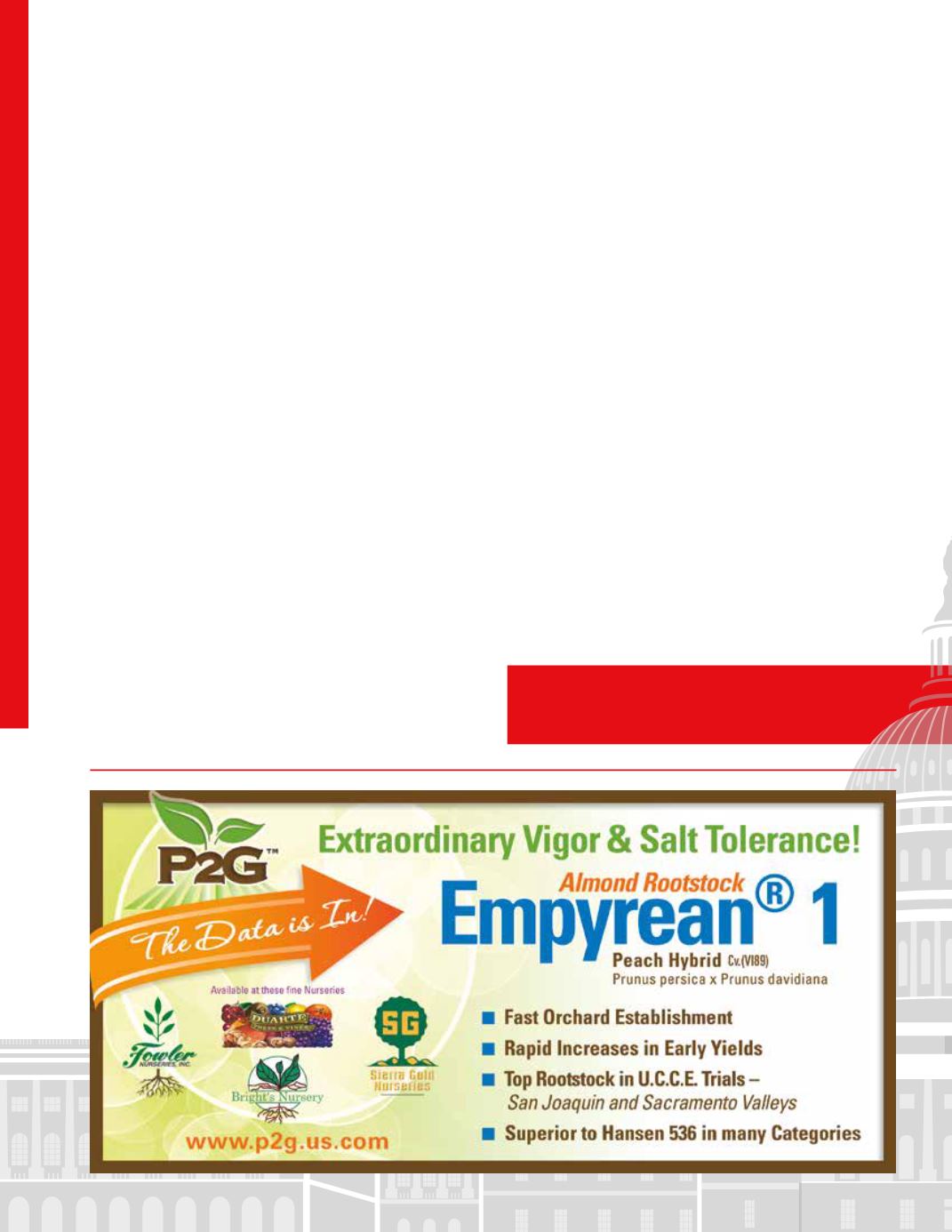
ADVOCACY REPORT
AB 151 (Burke) –
Placeholder legislation for an
industry supported “cap and trade” bill that will balance
appropriating revenues with oversight of California Air
Resources Board.
SB 41 (Galgiani) – State Air Board Regulations –
Prohibits CARB from further ratcheting up regulations on
entities deemed to be compliant with existing regulations.
Biomass
Managing biomass and organic byproducts continues to be
a major issue for the almond industry. The Almond Alliance
has been working closely with the Governor’s office, energy
agencies, and several coalitions committed to increasing
the amount of biomass energy produced in the state and to
finding alternative options for biomass byproducts.
There are several efforts underway including amending
SB 859, passed in 2016, which mandated utilities purchase
another 125 MW of biomass energy. The focus of that
measure was removing diseased trees and mitigating fire
risks. A last-minute provision to the bill mandated 80
percent of the new biomass energy come from forest waste
and 80 percent of that needed to come from high fire
hazard areas. The Almond Alliance is working to get the
thresholds reduced to allow for more ag and urban biomass
waste. Additionally, we are working with a cross section
of biomass and biofuel producers to increase the states
commitment to bioenergy, provide greenhouse gas emission
funds to assist the biomass industry and supporting longer
term actions to identify alternative management practices.
We are working through the budget, administrative and
legislative channels to accomplish these goals.
Trans-Pacific Partnership
Regardless of which candidate became President it
was apparent that the U.S. would not remain part
of the Trans-Pacific Partnership (TPP). On January
23, President Donald Trump signed the Presidential
Memorandum Regarding Withdrawal of the United
States from the Trans-Pacific Partnership Negotiations
and Agreement.
The TPP had included 12 countries that represent
approximately 40 percent of the world economy. Nearly
10 percent of the 2015-16 almond crop was imported by
TPP countries valued at $914 million in 2015; with Japan,
Canada and Vietnam the top three TPP countries that
import almonds. With TPP, tariffs on almonds would
have been eliminated in Japan and Vietnam, encouraging
greater trade with the participating countries and
providing access to more than 480 million consumers.
While the U.S. has left TPP, we will be watching what other
trade partners do. China is working to advance a competing
free trade agreement, the Regional Comprehensive
Economic Partnership (RCEP), which includes 16 countries
in the Southeast Asia region. The RCEP countries
represent 24 percent of the world economy, and imported
approximately 23 percent of the almond crop in 2015-16.
The three largest importers of almonds participating in
RCEP are China, India and Japan.
Visit almondalliance.org to learn more about how
we are working to maximize your investment in the
almond industry.
30
Almond Facts
MARCH | APRIL 2017


